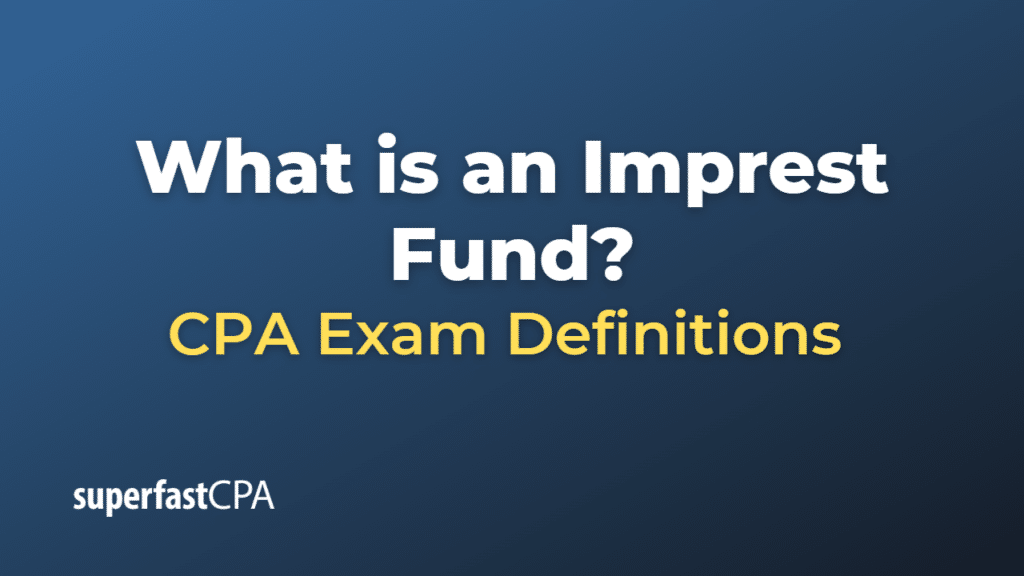Imprest Fund
An imprest fund is a type of cash account that a business uses to pay for small, routine expenses. The most common type of imprest fund is a petty cash fund. The defining characteristic of an imprest fund is that it has a fixed balance that is regularly replenished to maintain the set amount.
Here’s how it works:
- The business establishes an imprest fund with a certain amount of money, for example, $200. This is the fund’s fixed balance.
- Employees can take money from the imprest fund to cover small, incidental business expenses. Every time money is taken out, a voucher is created detailing the amount of money taken, what it was used for, and who authorized the expenditure.
- When the imprest fund starts to run low, the fund is replenished back to its original fixed balance of $200. The amount of the replenishment should be equal to the total amount of money that was taken out (as detailed in the vouchers).
- At any given time, the total value of cash in the imprest fund plus the value of the vouchers should equal the fund’s fixed balance.
The imprest system helps businesses to keep control over their small cash expenditures, making it easier to track these expenses and ensure that funds are not being misused. The consistent balance simplifies the accounting for these funds, as the total should always match the initial set amount.
Example of an Imprest Fund
Let’s use an example of a petty cash fund, the most common type of imprest fund.
- A small business decides to establish a petty cash fund with a fixed balance of $500. This fund is meant to cover minor business expenses such as stationery supplies, small maintenance tasks, postage, etc. The $500 is withdrawn from the business’s bank account and kept in a secure location in the office.
- Over the course of the month, employees use the petty cash for various minor expenses. For instance, one employee spends $50 to buy stationery, another spends $30 for a cab fare for a business meeting, and so on. Each time they take money from the petty cash fund, they leave a note or receipt indicating what the money was used for.
- By the end of the month, employees have spent $200 from the petty cash fund, leaving $300 in cash. The notes and receipts they’ve left total to $200.
- Now, the fund needs to be replenished back to its original balance of $500. The business writes a check or makes a cash withdrawal for $200 (the total amount spent as per the notes/receipts), which is added to the petty cash fund. In their accounting books, the business records this $200 as a decrease in their bank account and an increase in their petty cash account.
- This process is repeated each month. The petty cash fund always starts with the same balance ($500 in this case), and is always replenished back to that balance at the end of the period.
This system allows the business to easily track and control minor cash expenses, while also maintaining a clear audit trail. The petty cash fund, as an imprest fund, always maintains the same balance, ensuring that the total value of cash and receipts in the fund should always add up to the original fixed balance.













